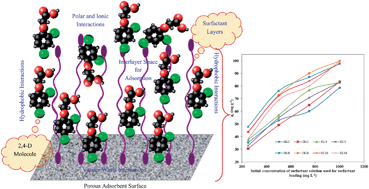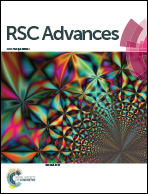Surfactant modified tectosilicates and phyllosilicates for 2,4-D removal and slow release formulation
Abstract
The removal performance of 2,4-dichlorophenoxyacetic acid (2,4-D) in aqueous solution was investigated by an adsorption process on surfactant modified silicates. Surfactant loaded tectosilicates (clinoptilolite and zeolite Y) and phyllosilicates (bentonite and montmorillonite) have been evaluated as potential adsorption media for this purpose. Complete structural characterizations of surfactant loaded materials were performed by infrared spectroscopy and electron microscopy. Surface modification of selected adsorbents by loading surfactants results in a corresponding increase in the removal of 2,4-D from water. The adsorption data fitted well with the Langmuir adsorption isotherm. Based on the Langmuir adsorption model, the calculated maximum monolayer 2,4-D adsorption capacity values for hexadecyltrimethylammonium ion and dioctadecyldimethylammonium ion loaded montmorillonite (HLM and DLM) at 303 K are found to be 158.73 and 161.29 mg g−1, respectively. The slow release studies have also been performed by a thin layer-funnel analytical test and by a soil column percolating system. The adsorption and desorption results obtained from this reported study prove the surfactant loaded silicates as potential adsorbents for 2,4-D (anionic herbicide) from aqueous solution and can be used as slow release herbicide medium.


 Please wait while we load your content...
Please wait while we load your content...